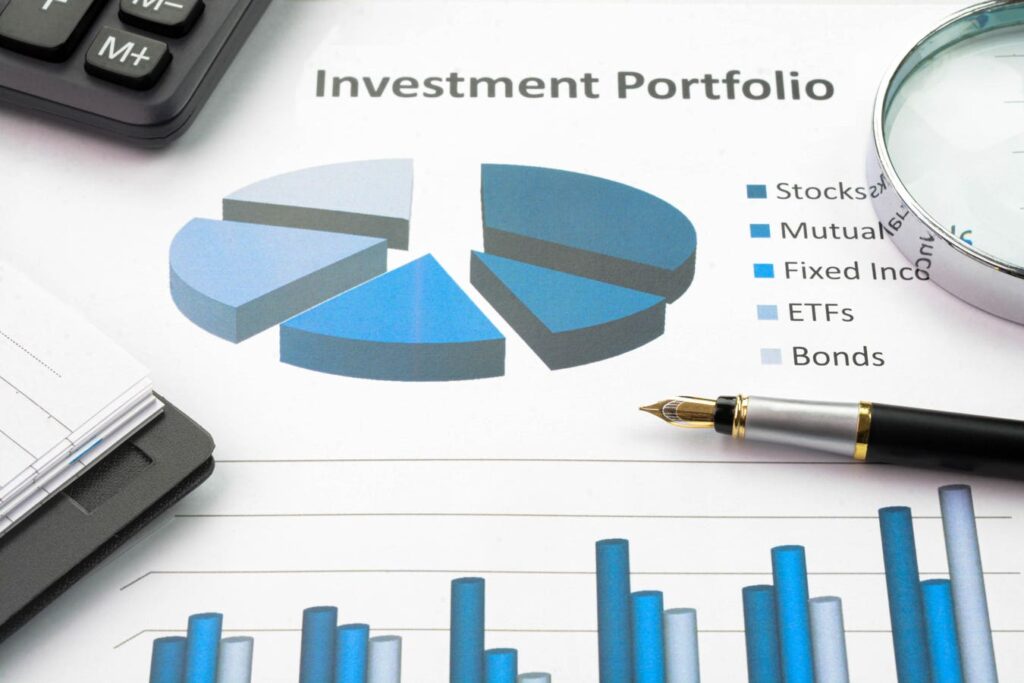Most investors consider equities to be risky, fixed-income instruments to be conservative, and cash to be completely safe. However, this perspective can be misleading, particularly when the fixed-income portion of a portfolio consists of anything other than bonds held to maturity. Bond funds—the most common way investors gain exposure to fixed income—can be as risky as equities.
Asset allocation lies at the heart of any investment portfolio, and individual investors have traditionally focused on three major asset classes: equities, fixed income, and cash. Generally, equities provide growth, fixed income provides an income stream and cash provides safety. This classification is not completely rigid. Some equities provide income through dividends, while certain riskier fixed-income instruments, such as junk bonds, may offer growth potential.
What determines returns?
Broadly speaking, stock returns depend on two main factors: corporate earnings and equity multiples—the price investors are willing to pay for those earnings. While other factors also influence stock returns, these are the primary drivers.
In contrast, fixed-income returns are primarily influenced by interest rates. Other factors, such as changes in the credit quality of bond issuers, also play a role but are secondary.
The graph illustrates the total return of AGG, an exchange-traded fund, or ETF, that tracks a broad bond index and the level of the 2-year U.S. Treasury rate (inverted, with lower rates at the top and higher rates at the bottom on the right axis). The correlation between interest rate levels and bond fund returns is strikingly clear.
Individual bonds and bond funds are different
A fixed-income instrument, such as a bond or note held to maturity, has a return that is known at the time of purchase—assuming no default occurs. Ignoring secondary factors, such as the reinvestment rate of coupon payments or whether a bond has call features, a bond’s return is determined by three factors: the purchase price, the time to maturity (when the bond repays its principal or “face value”), and the size of any intermediate coupon payments. Some instruments, such as U.S. T-bills, have no coupon payments, so the purchase price and maturity date entirely determine the return.
Bond funds, however, are very different. Because their constituent bonds are often sold before maturity, their exit prices depend on prevailing interest rates at the time of sale. Unlike individual bonds, which repay their face value at maturity regardless of interest rate fluctuations, bond funds are highly sensitive to rate changes and this can add to the volatility of the portfolio, especially if stock prices fall and interest rates go up at the same time. As shown in the graph above, bond funds effectively act as proxies for interest rates: Rising rates cause their value to fall, while declining rates cause their value to rise.
The key takeaway is that equating “fixed income” with “conservative” is a significant misconception. Bond funds, particularly those with intermediate or longer maturities, introduce substantial volatility into what is typically intended to be the stable portion of an investor’s portfolio.
Bringing volatility down through individual bonds
In the last several quarters, our firm implemented a strategy that largely avoids bond funds, except in specific cases such as those composed of short-term floating-rate instruments. The performance of this strategy speaks for itself.
The graph shows the performance of the fixed-income portion of all clients who were with our firm at the start of 2024 through today. New clients in 2024 coming to the firm with pre-existing allocations were excluded from this analysis. The volatility in these fixed-income accounts was remarkably low at just 0.47%, compared to 5.71% for the AGG fund and 12.3% for the S&P 500.
This illustrates how differently a bond fund and a portfolio of individual, short-term fixed income instruments held to maturity behave. It is not intended as a recommendation. Like any investment strategy, this one carries various risks that may not be reflected in the past performance shown here. For instance, a bond fund could significantly outperform a basket of individual bonds during a prolonged and steady decline in interest rates, as it happened between May and September.
However, the key distinction remains: individual bonds that do not default have a predictable return at the time of purchase, whereas the return of a bond fund is inherently uncertain over any given period. This highlights the important fact a conservative allocation is not synonymous with a fixed-income allocation, when that is implemented using bond funds.
Read the full article here

